After a decade of grassroots growth, the laboratory sustainability movement is bursting into the mainstream finds James Mitchell Crow
Of all the experiments that will ever be conducted at the GSK Carbon Neutral Laboratories for Sustainable Chemistry, officially opened in February 2017 at the University of Nottingham, biggest is the building itself.
As the name suggests, the building of course ticks all the expected boxes for a structure that boasts BREEAM Outstanding and LEED Platinum certification, the highest green building bone fides. Its main construction material is sustainably grown timber; its design maximises passive heating and ventilation; a solar array covers around 45% of the roof; a sustainable biofuel combined heat and power system supplements the building’s heating and electricity needs, and also helps heat nearby buildings.
But in terms of sustainability, none of building’s cutting-edge energy-, water- and waste-saving technologies are actually the most important aspect of the design, says Peter Licence, the lab’s director. ‘This building challenges people to think and operate differently,’ Licence says. The big experiment being conducted there is to assess whether a building can fundamentally reshape the working practices of its occupants, so that sustainability becomes integral. The whole building has been set up to get its occupants to stop and think – about safety, sustainability and the experiment itself – before each experiment they conduct.
The building represents one apex of the rapidly spreading laboratory sustainability movement. It offers a glimpse of what could become the new standard for research space design. Whether or not Nottingham’s Carbon Neutral Laboratories become a model for how all labs in future will operate, change in one form or another is coming to research workspaces. Sustainable practices, pioneered in forward-thinking research organisations over the past decade or so, are on the verge of become an integral part of everyday life in the lab.
Grassroots
The pioneers of laboratory sustainability have entered the area from multiple start points. For Licence, the journey began immediately after his PhD, conscious that organic chemistry research typically generates many kilograms of waste for a few milligrams of product. He has worked in green chemistry research ever since. ‘My philosophical position moved more and more towards the design of reactions that were efficient in terms of atoms but also energy,’ Licence says.
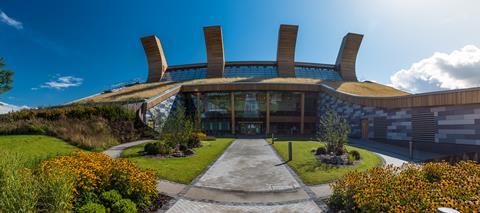
The Carbon Neutral Laboratories takes that concept and broadens it significantly. ‘It’s not just about the chemistry in the round bottomed flask, but the provision of the laboratory, the infrastructure – which often has a much larger environmental footprint than the experiment itself,’ Licence says.
For sustainability consultant Allen Doyle, the start came while working as a soil biochemistry lab manager at the University of California, Santa Barbara, in the US in the early 2000s – and a growing consciousness of his own lab’s environmental impact. ‘I was studying natural habitats, but I wasn’t doing much for the environment,’ he says. The chance to do something more arose around 2004, when Doyle was part an informal sustainability committee at the university. As university campuses began publishing their first greenhouse gas inventories, the size of the problem suddenly crystallised. Laboratories would typically take up 25% of the building space of a research-focused university, but account for up to 70% of the campus energy budget. ‘The footprint of research labs was a shock,’ Doyle says.
To help lab occupants evaluate and reduce their impact, Doyle co-founded one of the first lab sustainability programs: Laboratory Resources, Advocates, and Teamwork for Sustainability (LabRATS). In 2008 he moved to the University of California’s Davis campus as a full-time green laboratories manager, where he worked for a decade.
The past decade has been a period of rapid growth and development for lab sustainability, Doyle says. ‘Over the past 10 years the field has matured from embryonic to, I’d say, adolescent. The biggest achievement we have made is getting it on the mind of scientists that they can practice conservation where they work – they don’t leave their concerns for the environment at home.’
There is a lot of scope for savings. ‘We’re not going to solve climate change by fixing research labs, but they are a very energy intensive area that we can have a significant impact on,’ says Martin Farley, sustainability labs advisor at University College London in the UK. ‘People can have a pretty big impact in the lab compared to their homes.’
In the late 2000s and early 2010s, there were plenty of quick wins to focus on. Many revolved around simply turning things off when not in use, says Kathryn Ramirez-Aguilar, who manages the Green Labs Program at the University of Colorado Boulder in the US, which started in 2009. For example, no one just leaves their oven on all the time at home, but in a lot of labs the drying ovens are never switched off. ‘One of the first things we did was to put timers on those, so they shut down when not needed,’ Ramirez-Aguilar says.
Other obvious quick wins with little or no financial barriers include shutting fume hood sashes, turning off lights, and getting rid of water aspirators and single-pass water cooling of reflux condensers and rotary evaporators. By metering different pieces of equipment, the bigger energy guzzlers were identified.
For most lab buildings, the biggest energy consumption component is ventilation, and the resulting challenge of heating or cooling the building when the entire internal air volume is being ejected into the sky by fume hoods as frequently as every five minutes. ‘Chemistry buildings have the most air quality challenges, and the highest airflow, which is really what it’s all about,’ says Doyle. Major savings can be made, depending on local regulations on laboratory ventilation. In one major retrofit project, which included installing real time air quality sensors and variable speed fume hoods, the University of California Irvine reported it had halved the energy consumption of some lab buildings.
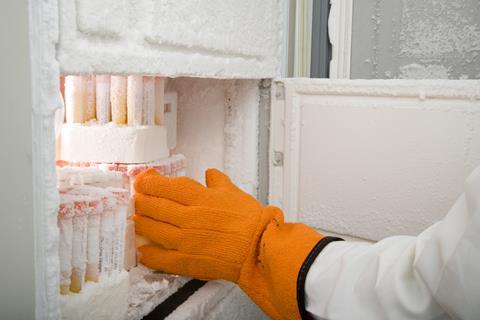
Lab refurbishment works at this scale don’t happen every day, but there are plenty of other areas to focus on. The freezers sitting quietly in the corners of most labs turned out to be a significant culprit. Doyle and Ramirez-Aguilar pioneered the Freezer Challenge – now an international competition involving hundreds of labs each year – to cut energy consumption by encouraging labs to defrost their freezers, check the temperature, and clear out old samples to free up space. The fewer of these appliances that have to be run, the better. ‘One –80°C freezer uses the same amount of energy as a household, and universities can have literally hundreds of these,’ Farley says.
Eye-opening
All in, the 2019 Freezer Challenge achieved an estimated 2.4 million kWh per year in energy savings. Steps like these may seem small, but the significant thing is that people are making them at all. Getting researchers to look at their lab practice through new eyes is central to the mission of US not-for-profit My Green Lab.
‘Scientists are taught to follow protocols – it doesn’t matter what type of research you do, it is the very first thing you learn,’ says Allison Paradise, a former neuroscientist who started My Green Lab in 2013. ‘A big part of our message is “Just stop and ask – what am I doing, and is this really the best choice?” And then it is a much more fundamental mind shift.’
Featuring the kinds of programmes Doyle and Ramirez-Aguilar had been developing in their own institutions, My Green Lab has been helping to roll out to labs across the nation – and increasingly, internationally. ‘Allison Paradise has been a tremendous colleague to come in,’ Doyle says.
The organisation’s key tool is a green lab certification programme. ‘Certification is a great place to start, because once you start looking at your lab through the lens of what it is consuming, things will just start popping out at you,’ Paradise says. My Green Labs certification has five levels, so if a lab achieves silver certification it will receive suggestions for achieving gold. The certification expires after two years, driving constant re-evaluation. ‘Every lab that we started certifying five years ago is still part of the program today,’ Paradise says. ‘Our programmes reach tens of thousands of people every year.’ Astra Zeneca was one of the most recent organisations to sign up to the certification scheme (see box).
In the UK, Farley has started the Laboratory Efficiency Assessment Framework (Leaf), a certification scheme intended to spark change while being administratively light. ‘The point of Leaf is to make it as easy as possible to do the things that have an impact right away,’ Farley says. ‘When labs get given a set of easy to use criteria, where they can feel confident they are having an impact, it often inspires them to come up with innovative solutions we haven’t thought about that are unique to their setting. They start to say “What’s next?”’
Industry versus academia
Academic labs and industry labs each have their own challenges when it comes to introducing sustainable practice, says Allison Paradise, founder of US-based not for profit My Green Lab. ‘Universities are really good at getting something started – but the challenge is that if they have 100 labs, it’s like they have 100 companies that have to be managed,’ Paradise says. ‘Whereas if you are at a company you can top-down and say “This is what we are doing.”’ Companies tend to be really thoughtful before they start something, she explains. You can’t go into a pharma company and say “You should change your process” after it is FDA-approved. But once they do it can be really transformative.
In March 2019, AstraZeneca announced it was working with My Green Lab across six of its R&D sites, three in the US, two in the UK and one in Sweden. ‘This has been a super programme for us, bringing a framework that we can put a lot of our sustainability projects under,’ says Pernilla Sörme, risk management lead in global sustainability at AstraZeneca based in Cambridge, UK.
If you want to get the best researchers today, you need to be a good company
Although green chemistry has long been a focus at AstraZeneca – it was one of the original six members of the ACS Green Chemistry Institute Pharmaceutical Roundtable – My Green Labs is helping the company take a broader look at sustainability. ‘My Green Lab have shared a lot of best practices with us, for example the international freezer challenge. Their experience has helped us think about addressing these challenges at scale across our sites,’ Sörme says.
The company’s targets over the next year include working with suppliers on packaging recycling, Sörme explains, and ensuring that its scientists to ensure they are not using a higher grade of solvent or reagent than they really need.
Aside from sustainability simply being ‘the right thing to do’, the benefits for AstraZeneca range from energy saving to recruitment, she adds. ‘If you want to get the best researchers today, you need to be a good company. During the interview process now, we see the young applicants asking about our sustainability policy and goals,’ Sörme says. ‘They are not going to work for a company that is not considering the environment and its impact.’
‘There is a really opportunity for companies to lead in this space and act as a role model for universities,’ Paradise says. ‘If you have companies putting out there that they care about lab sustainability and that they expect scientists to be trained in this way, it sends a strong signal to universities to ensure their students are trained for it.’
Sustainability through reproducibility
Programmes like Leaf and My Green Lab are already having a measurable impact. In a My Green Lab certification project in Ontario, Canada, for example, 23 chemistry labs achieved a combined saving of 17,000 tonnes of CO2 equivalents, the typical emissions from almost 2000 homes, says Paradise. But it is still just scratching the surface. ‘People should not get too comfortable,’ she says. ‘People are doing great work but now is the time to capitalise on that.’ It is time to stop talking about metering freezers, and look at the next big opportunities, she argues.

At UC Boulder, one of the most successful innovations Ramirez-Aguilar points to is to start to foster a philosophy of sharing, by placing lab equipment in a shared, managed facility where possible. The biggest shared facility at the university is BioCore, which incorporates 85 instruments shared across three departments, from centrifuges and sonicators to spectrophotometers and chromatographs. A full-time manager keeps track of and maintains all the equipment and can offer guidance on its use.
The programme not only avoids the financial and energy costs of duplication – it saves precious space. ‘Research is not a straight line, researchers buy equipment then make an unexpected discovery that brings them in a totally different direction,’ Ramirez-Aguilar says. The lab ends up becoming an expensive storage space for unused equipment. If the equipment had been in a shared facility, others would know about it and could continue to use it.
‘BioCore has influenced a lot of the future planning and thinking about lab space,’ Ramirez-Aguilar says. The team is looking at copying the BioCore idea in other areas of campus. ‘The most sustainable building is the one we don’t have to build, because we are being more efficient and effective with the space we have. These are the big picture areas we have moved into because there are such huge benefits,’ Ramirez-Aguilar says.
Core facilities managed by dedicated technicians also have benefits when it comes to scientific rigour and reproducibility, adds Farley, who is also a big proponent of the idea. In setting up Leaf, Farley worked with the UK reproducibility network. ‘Reproducible science is the most sustainable science,’ Farley says. ‘A lot of the things you would do around improving sustainability lead to improved reproducibility, it turns out. We should use more core facilities, where you have dedicated technicians who can provide input on how to build your experiment, troubleshoot any problems, and take care of equipment.’
Embedded sustainability
In 2019, 16 research institutions across the UK and Ireland participated in a pilot of the Leaf programme. Over 30 institutions have signed up to take part in the 2020 follow-up pilot. The aim, says Farley, is for the practices promoted in Leaf to become the norm. ‘The long-term goal is that Leaf is integrated into research funding, so it becomes standard practice,’ Farley says. ‘We have definitely had interest from funders.’
In the UK, the Natural Environment Research Council has been tasked with developing the UK Research and Innovation (UKRI) environmental sustainability strategy. Due for sign-off in March 2020, the strategy will consider how UKRI can influence funding recipients to improve their environmental performance.
As part of her work with the International Institute for Sustainable Laboratories (I2 SL), Ramirez-Aguilar has also been looking at ways sustainability could be worked into research funding applications. ‘If we can connect efficiency to funding of research, then suddenly everyone is engaged, regardless of whether their campus has a green labs programme,’ she says.
Whatever we do with green labs has to be something similar to how we treat ethics
As a first step, Ramirez-Aguilar and her I2 SL colleagues are developing a website to promote researchers voluntarily incorporating actions for efficiency into their grant proposals. ‘The idea is your proposal will stand out and will demonstrate to the funder efficient use of that funding,’ she says. One of the most encouraging signs, Ramirez-Aguilar notes, is that the National Institutes of Health – one of the biggest research granting agencies in the world – recently started a green labs programme for its own labs.
Working out how to incorporate sustainability measures into research funding is not a simple task. ‘As a scientist, I wouldn’t want a grant review to depend on anything but the merits of the science,’ Doyle says. Writing research proposals is already burdensome enough, he adds. ‘So I think it has promise, but do you frame it up? That’s a frontier, for sure.’
Paradise has also had conversations with funders about linking sustainability to funding. ‘I think there is an opportunity for our community to come together to shape what that looks like,’ she says. One possibility is to handle it the way the NIH grants handle research ethics requirements. ‘The NIH says every grad student has to take an ethics class that talks about certain main topics – how you do that is up to you, but it allows you to check a box that you meet that requirement,’ Paradise says. ‘Whatever we do with green labs has to be something similar to that, because if it is anything more, who is going to police it?’
Better building
At the University of Nottingham, the Carbon Neutral Laboratories offer another possible way to embed sustainability into everyday life in the lab, using the design of the lab itself.
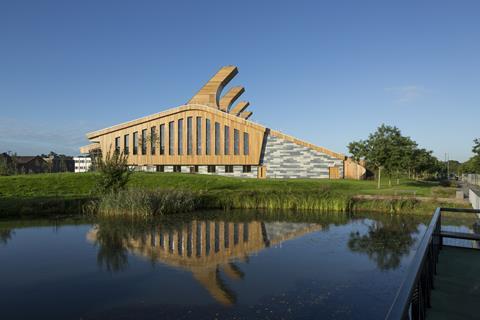
Rather than tens of identical fume hoods, the building houses a range of different experiment environments, with different levels of supporting infrastructure around them. ‘Unfortunately, we have become over-coached to always do a chemical reaction in a fume cupboard which has extracted air going out at 50 metres per second or so, and provision of an inert gas, a vacuum, hot water, cold water, chilled water. If you look at all the resources on your smorgasbord of stuff you can use, how many of them do you need for that reaction?’
The building is giving us energy consumption data, population data – sensors that say how the space is used
So the building features different reaction spaces with different levels of supporting infrastructure. ‘Our building is designed to force people to think and make deliberate decisions about how, when and where they do their science,’ says Licence. ‘And that makes them ask unusual questions that they perhaps haven’t considered before, to the design and execution of the experiment.’ It’s about doing due diligence in the library, and answering research questions by doing a small number of well-designed high-quality reactions. ‘I think that’s the future: making the experiment count.’
To monitor this grand experiment, numerous sensors track how the building is used. ‘It is giving us energy consumption data, population data – sensors that say how much of the space is used and how regularly,’ Licence says. ‘This experiment is really about developing and instrumenting a model to learn from it, and how it could be adapted and modified to move on to the next version.’
For the scientists who moved into the building, adapting to work in this new way was certainly a challenge, Licence says. But one key metric – the quality of science output – is a success, Licence says. ‘One of my colleagues, Ross Denton, just published an organocatalytic Mitsunobu reaction in Science, which is already being used in scale up processes in industry,’ he says. ‘We are delivering quality output – the building isn’t slowing us down.’
The ultimate measure of success – the broader impact of the PhDs and postdocs who learn their trade at the Carbon Neutral Laboratories – will take a lot longer to measure. ‘We won’t know the true impact of this project are until the generation of people we are training now start to deliver in industry or education,’ Licence says. ‘I do think that is the biggest legacy. The physical building is just the ark.’
Whether it is the spread of new lab designs, the spread of a new generation of scientists trained in them, or the incorporation of sustainability metrics into research funding, sustainability is moving into the mainstream.
But there’s no need to wait for change to come to you, Paradise says. ‘Just open up your eyes and do something. Start with the freezer challenge, it is free, easy.’ Some of the biggest green lab programmes in the US – including Harvard and the University of Birmingham in Alabama – were started by individual undergraduates, she notes. ‘It is very easy to feel unempowered and overwhelmed. I think it is important for people to realise that is just noise, you can achieve whatever you want to do, and our community is here to help.’
James Mitchell Crow is a science writer based in Melbourne, Australia

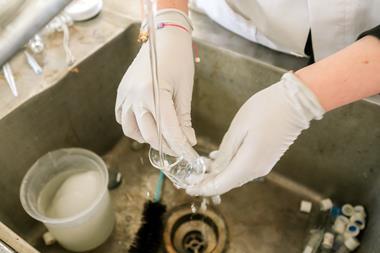

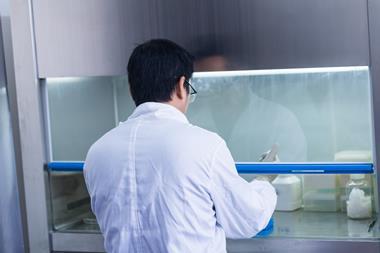

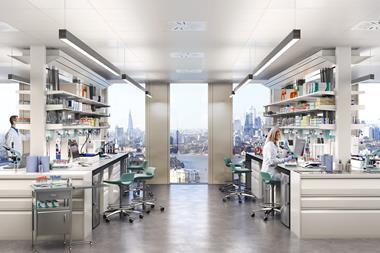
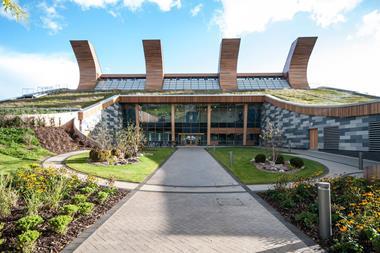






No comments yet